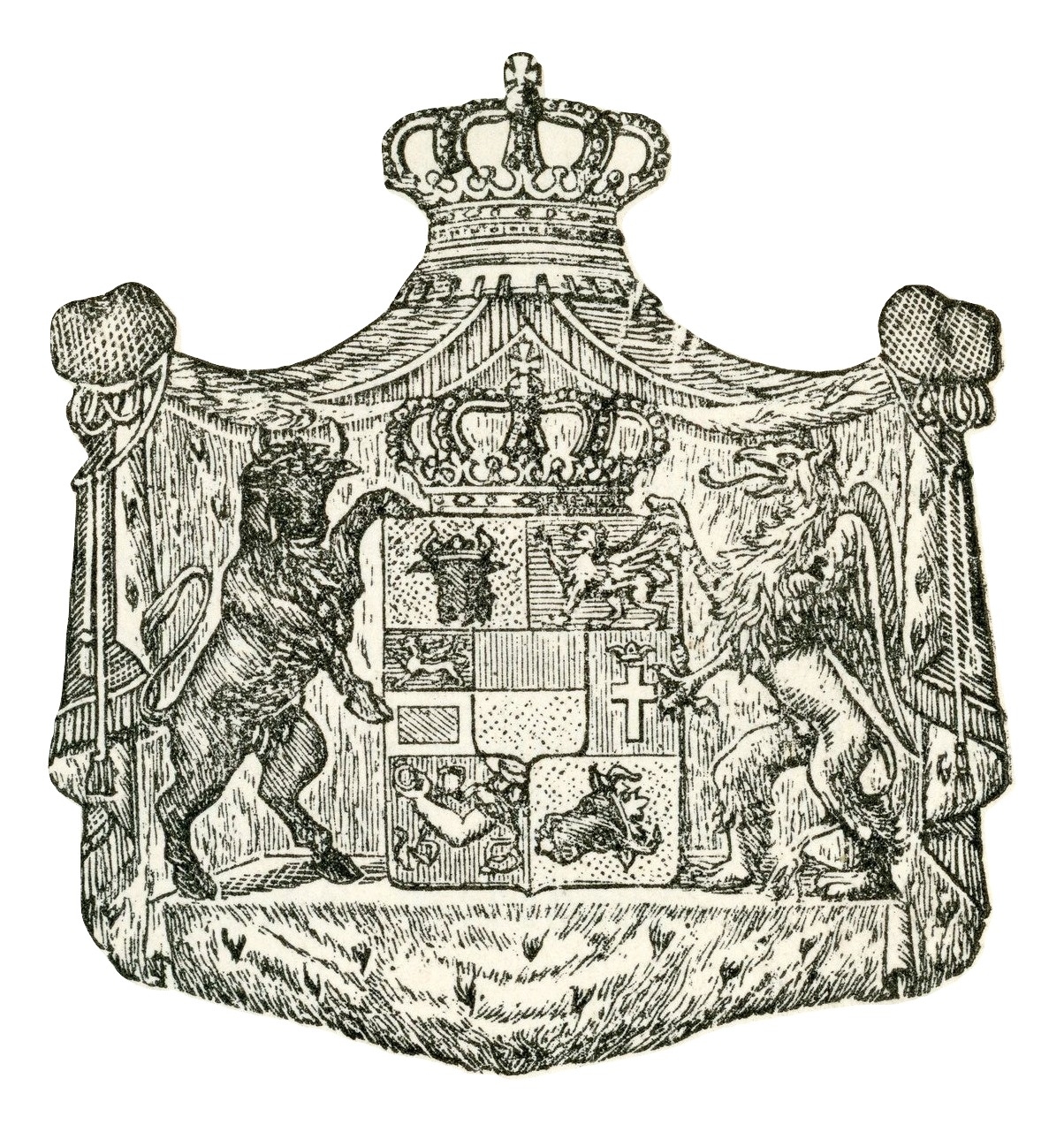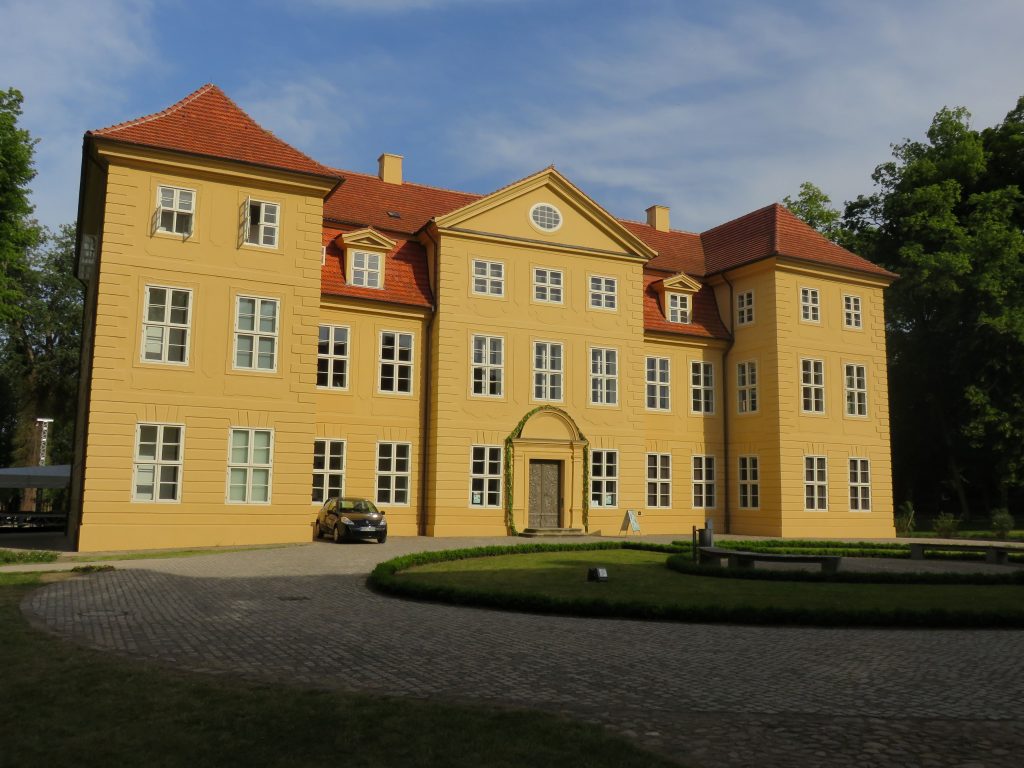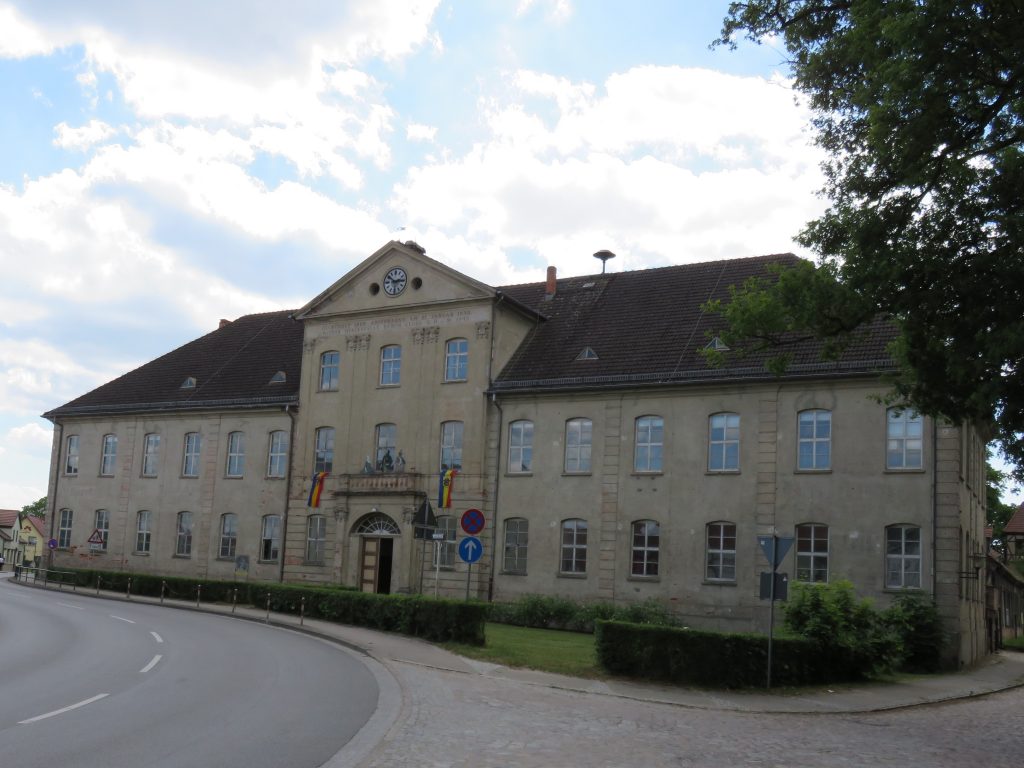Palace Island
Construction of Schloss Mirow began in 1707 under the direction of the Pomeranian architect Joachim Borchmann taking five years to complete. The Schloss initially served as the residence of the widowed third wife of Duke Adolf Friedrich II, the Dowager Duchess Emilie and her young son Duke Carl. The Schloss was partially destroyed in 1742 after a lightning strike on the tower of the Church of St John set off a fire on the Castle Island.
The Dowager Duchess lived at Schloss Mirow until her death in 1751 when it passed to her son (who died the following year), and daughter in law Duchess Elizabeth Albertine who had the Schloss renovated between 1753 and 1760, giving it the appearance that it retains to this day of a three storied building with a H shaped floor plan. The central building is on two floors with a converted attic roof while the two side wings are both three stories high.
The death of Duchess Elizabeth Albertine in 1762 brought to an end to Schloss Mirow’s days of hosting a permanent court with it instead becoming a summer residence for the ducal family whose primary residence was Schloss Neustrelitz. From that period onwards Mirow only retained its significance due to its hosting of funerals for members of the House of Mecklenburg-Strelitz.
Following the 1918 German revolution and abolition of the monarchy Schloss Mirow was expropriated by the new republican government who turned it into a museum. The German Armed Forces later took over control of the Schloss, they were followed by the Soviets who used it as a granary. From 1951 to 1978 it was used as a retirement home.
Following German reunification in 1990, Mirow would gain its first permanent royal resident since Duchess Elizabeth Albertine when Duke Georg Alexander was invited by the local council to take up residence on the Castle Island, where until his death in 1996 he worked to promote its restoration. Since 1999 the Schloss has been undergoing a restoration that is scheduled to complete in 2014.
Located directly opposite the Schloss is the Cavalier House which was built between 1756 and 1758 to serve as a kitchen and service building. The house is a two story building roughly the same size as the Schloss, it is currently hosts a museum called the 3-Königinnen-Palais.
Also on the Castle Island is the Church of St John which contains the royal crypt where the majority of members of the House of Mecklenburg-Strelitz are interned. The Knights of the Order of St John established a Priory on the Castle Island in 1227 with the first documented mention of the church in 1341 although it is likely to date to almost a century before then.
In 1742 the church tower was struck by lightning which set of a fire on the Castle Island which destroyed the church and caused damage to other buildings on the Castle Island. The church was subsequently rebuilt and was consecrated again in 1744. Reconstruction of the tower was finished in 1747 with the copper for the tower roof being gifted by the Prussian king, Friedrich the Great. In 1747 the church was also extended in order to expand the royal crypt. The practice of burying members of the House of Mecklenburg-Strelitz in Mirow was established in 1704 by the house’s founder Duke Adolf Friedrich II following the death of his second wife Duchess Johanna.
The church was destroyed again in 1945 after bombardment from the retreating German Army although the royal crypt survived. Reconstruction began in 1949 and the rebuilt church was consecrated the following. In 1996 the church witnessed its first royal funeral in over half a century following the death of Duke Georg Alexander who was also laid to rest in the royal crypt which underwent a restoration in the late 1990s and is now open to the public. The last grand duke, Adolf Friedrich VI, was not interned in the crypt instead he was buried in a grave on Lovers Island which is connected to the main Castle Island by an iron foot bridge.
The Church of St John hosts the annual memorial service for deceased members of the House of Mecklenburg-Strelitz which is held on the penultimate Saturday of August every year.
Lower Palace
Located just outside the Castle Island is the Untere Schloss (Lower Castle). The design of court architect Christoph Julius Löwe, construction on the three story Untere Schloss began in 1735 taking two years to complete. It was built to serve as the residence of the heir presumptive to the throne Duke Carl and his new bride Princess Elizabeth Albertine of Saxe-Hildburghausen. Duke Carl, known as the “Prince of Mirow”, headed the cadet branch of the House of Mecklenburg-Strelitz. He was the son of the Dowager Duchess Emilie who had raised him in Mirow after his father Duke Adolf Friedrich II had died shortly after his birth.
The Untere Schloss was the birth place and home of Duke Carl’s ten children, although only six survived infancy. Amongst his surviving children were two sovereigns of Mecklenburg-Strelitz, Duke Adolf Friedrich IV and Grand Duke Carl, and Charlotte who went on to marry King George III of Great Britain.
The building underwent renovations in 1765 during the reign of Duke Adolf Friedrich IV. In 1820 Grand Duke Georg turned the Untere Schloss into a state teacher training college. A fire broke out in one of the attic rooms on 21 January 1848 causing serious damage. Later on that same year work began on restoring the building using a new contemporary design which it retains to this day.


